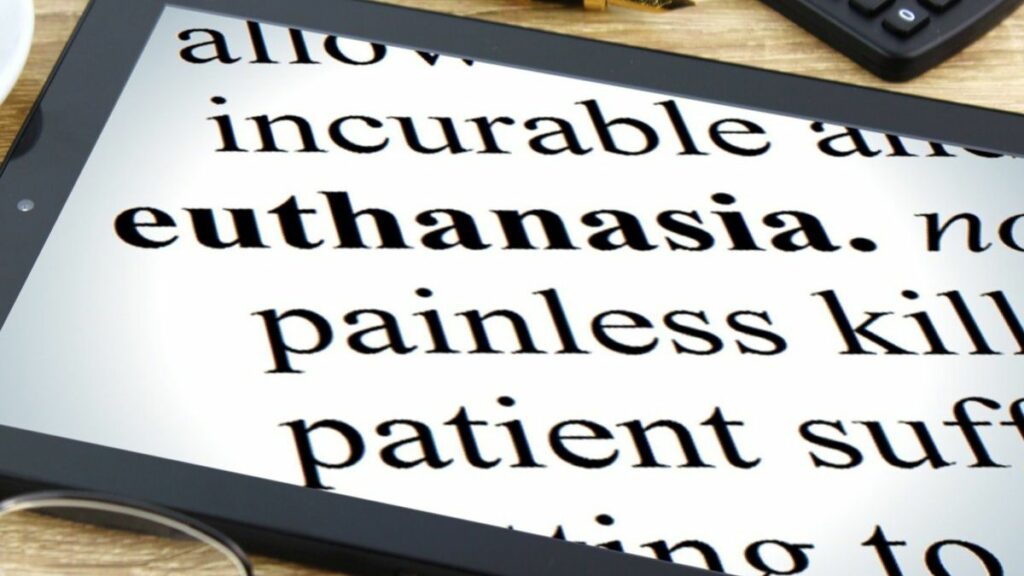In an op-ed for the Los Angeles Times this week, Nicholas Goldberg argues that California’s controversial “End of Life Option Act”—which allows for assisted euthanasia in specific cases—should be extended to include dementia and Alzheimer’s patients.
The End of Life Option Act, argues Goldberg, “has not led to the horror scenarios opponents had conjured,” and instead has allowed over 1,200 terminally ill individuals to end their lives peacefully. Goldberg believes the Act should be expanded to include more people, such as dementia and Alzheimer’s patients, and that “policymakers also could consider people with certain degenerative diseases or those living in chronic pain.”
Goldberg then cites the example of his own grandmother, who had made it very clear prior to a diagnosis of Alzheimer’s that when it was impossible for her to speak, read, or remember, she wanted to die. And yet, her worst fears were precisely the condition she found herself in—for years. Lying in a bed, unable to speak, read, remember, but also unable to dress herself, feed herself, or use the restroom. We must accept, closes Goldberg, that “fighting to extend life” is not always the best option, and that “there are fates worse than death.”
With that statement, I agree. One consequence of the amazing medical advances of the past century has been that human life often persists perhaps past the point those living it would wish. But I also wholeheartedly believe that there is a grave difference between suspending life-sustaining measures, and actively aiding someone in taking his or her own life.
Advocates of “assisted dying” like to decry the “slippery slope” argument—that allowing one form of carefully controlled, monitored, and seemingly merciful euthanasia will then lead to more and more liberalized practice or even abuses. But the experiences of countries like Belgium and the Netherlands, who were the first to legalize euthanasia, give some strong support to the slippery slope. The Netherlands became the first country in the world to legalize euthanasia, in 2001. (Before that time, euthanasia had been illegal, but still performed and rarely prosecuted.) The practice was to be allowed in cases of “unremitting and unbearable suffering,” and when “no reasonable alternative” existed. Rob Jonquierre, now the Executive Director of the International Federation for Right to Die Societies, told the Bulletin at the time that although doctors may see an increase in requests to die, he did not expect a “massive increase” in euthanasia numbers. And yet, in the period from 2007 to 2017, the number of Dutch people who died by euthanasia tripled. Since that time, the Netherlands has also permitted the euthanasia of minors, those suffering psychiatric illnesses such as chronic depression, and, most recently, those with advanced dementia (in cases where the person had previously expressed a wish to die).
The dementia ruling involved the 2016 killing of a 74-year-old woman who had expressed her wish to die by euthanasia before she would need to enter a nursing home. Nonetheless, she also expressed a wish to indicate that time herself, “while still in my senses and when I think the time is right.” She never did so, and eventually, others made the decision for her—she was given a sedative in her coffee. She awoke, however, and had to be held down while doctors finished the procedure.
When it comes to cases that literally involve life and death, we cannot be too careful. We can never know if the Dutch woman came to a place of enjoying her life, even in a seemingly reduced mental and physical capacity. We can never know if others around her might have found pleasure or companionship in her presence, again, regardless of her mental capabilities. What euthanasia does is pronounce that certain lives—those afflicted by suffering—are less worthy of living. Suffering, so goes the argument, is something to be avoided at all costs.
But what if we are wrong about suffering? What if it can in fact be one last route for reconciliation, for healing, for humility, or for the improvement of our souls?
To Mr. Goldberg’s story of his grandmother, I offer my own story of suffering. My father, who had been an alcoholic most of his adult life, suffered a horrific trucking accident in 1989 in which his pelvis and a number of his vertebrae were crushed. He physically recovered enough to walk and partake in most activities, but both his pain and his alcoholism worsened with the decades. There were many, many times when he indicated he thought it would be better if he were dead. He hurt too much. There seemed no hope for any kind of recovery—mental, physical, or emotional. His actions caused pain to those around him. And then, in April of 2019, he made the sudden decision to quit drinking. Against the pleas of his family, he did so cold turkey, with no medical aid—and it cost him his life, four days later, when his heart simply stopped. An autopsy was performed. I fully expected the report to indicate that he had, in his last hours, “given up” and had a drink. When the coroner told me over the phone that the toxicology report found no trace of alcohol in his system, I broke down in sobbing. In that moment, I was able to forgive decades of pain. And my father was able to beat the demon that had haunted him, giving his whole family a much better legacy to remember and a story of hope to cling to. Had my father had access to euthanasia as a means of escaping his chronic pain or mental disease (alcoholism), how different would be the memory and legacy we now hold? How different would he have felt at the end, knowing the disease had beaten him?
We can never, never know the end of the story, or the healing that it may bring. We do both ourselves and others an injustice to pretend we do.
